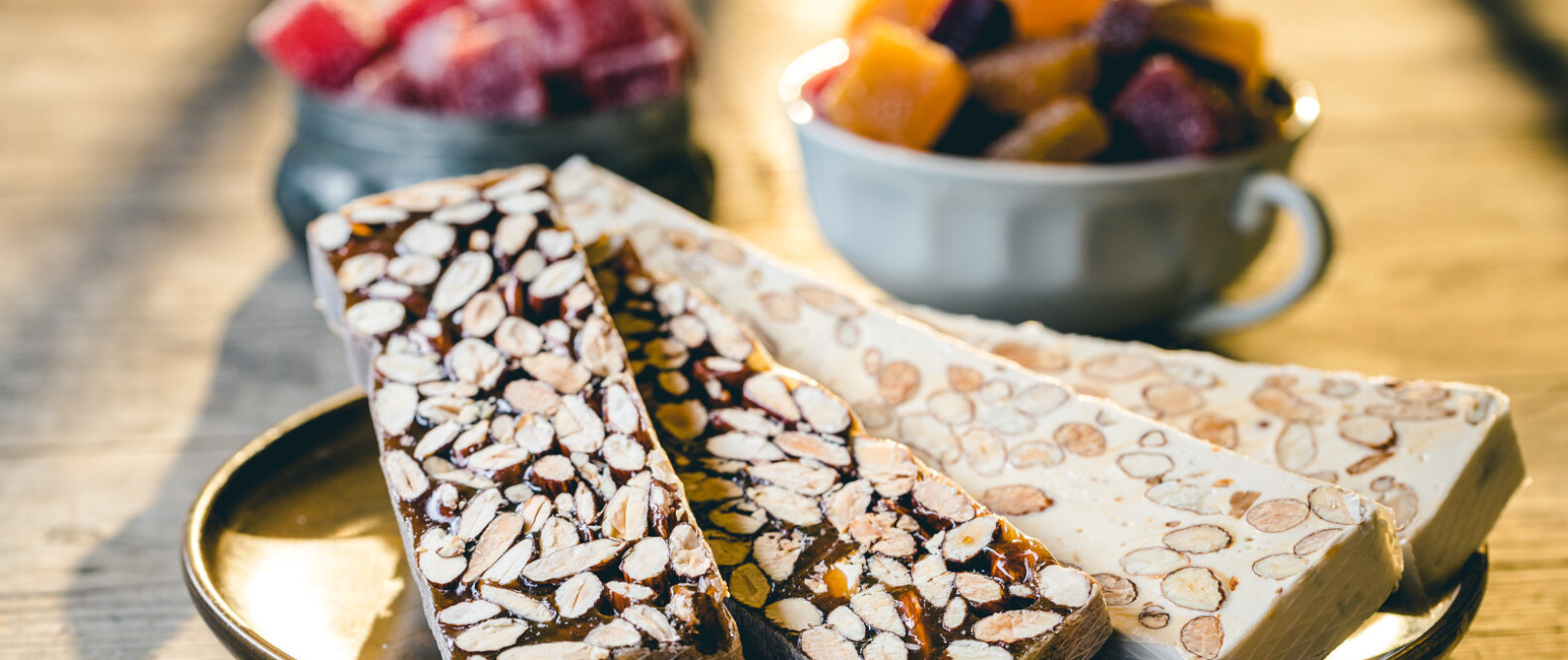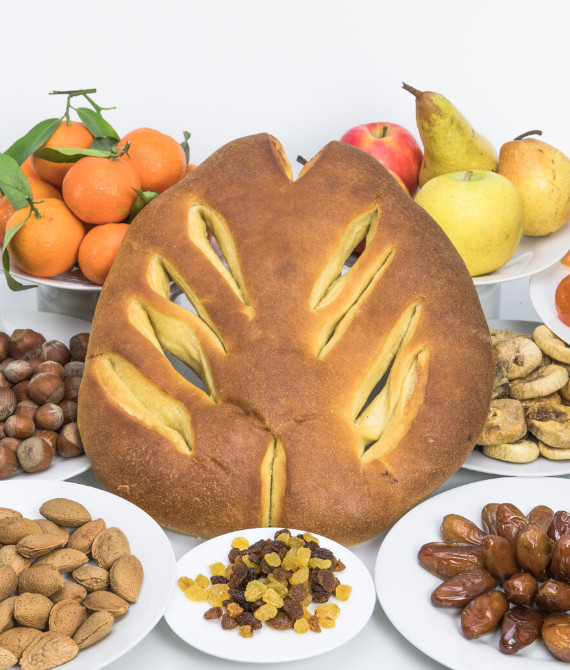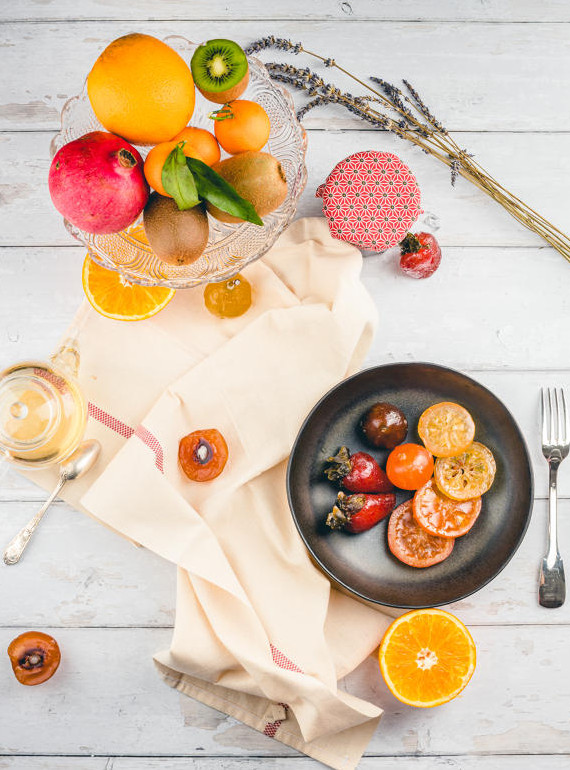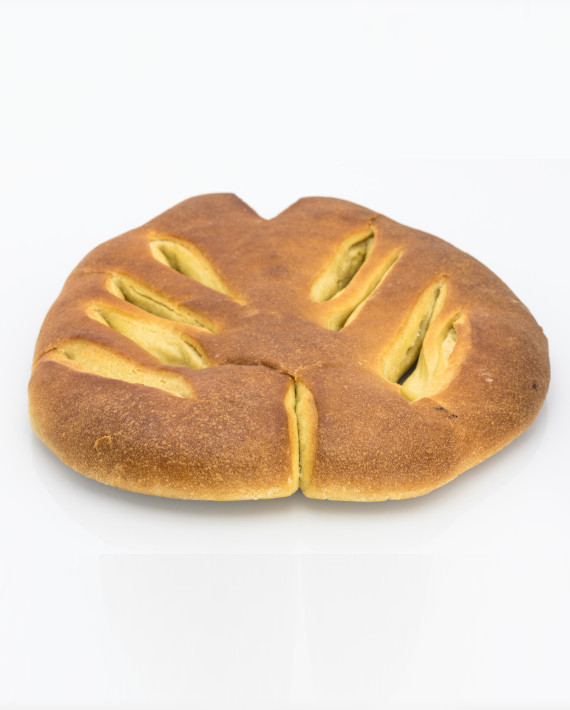
The best Christmas treats in Provence
Christmas in Provence is always a sacred time, where yummy gourmet traditions are respected to the letter. More than anything it’s the occasion for generations to create memories together, to tell stories by the open fire, or burst into a Christmas song
The Last Supper with 13 desserts
The 13 desserts are a delicious representation of Christ’s last supper, laid out over the Christmas dining tables of those living in Provence.
You start with dry fruit and nuts representing the begging orders: dry figs for the Franciscans, raisins for the Dominicans, almonds for the Carmelites and walnuts for the Augustinians.
Then, according to family tradition and what they feel like, hazelnuts, pistachios and dates, muscat grapes, apples, pears, oranges and “the last slightly wrinkled melon”, Pompe à l’huile (Provençal olive oil brioche), fougasse, oreillettes (crisp fried dough), white and black nougats, candied fruit (from Apt of course), quinze jam are added… what matters is that there are 13!
Nougat and candied fruits have pride of place in Vaucluse along the way of this great parade of delectable treats!

Quote
It was Frédéric Mistral who decided how many there would be: “In the Comtat Venaissin, the people want there to be thirteen, and most likely in other places too. So let’s choose thirteen!”. The Comtat Venaissin tradition prevailed.

Candied fruit from Apt


Did you know?
In the Middle Ages, the Popes of Avignon wanted fine food and bright colours to lay out on their banquet tables. This is why they got “confiture sèche” (dry conserves, or jam) from confectioners in Apt, which is why candied (or crystallised) fruit is called “fruits confits” in French.
The Maison du Fruit Confit is located on the outskirts of Apt. It’s on the list of must-visit addresses when you set out looking to get your 13 desserts for the Christmas festivities, or a tasty, colourful present for someone!
In this temple of sweet treats, you first come across an exhibition space displaying old machines, historic documents, an olfactive game and videos showing how things are made or used in cooking, etc. Panels in French and English explain the history of the know-how and candying techniques from Antiquity to modern day.
A tea room at the end of the visit gives the visitor the opportunity to try some candied fruit where it is made, used in delectable pastries and cakes. Finally the shop showcases all the individual candied fruits, as well as Provençal specialities made by local partners using candied fruit. You can also buy various other Provençal specialities there like berlingots from Carpentras, Calissons from Aix, and nougat from the Ventoux…
Nougat
Making nougat is a family thing at Les Nougats Silvain!
The Silvains were farmers originally and went on to become nougat makers: they grew almond trees, and kept bees, and after harvesting the almonds and collecting the honey, they made nougat. Or at least different kinds of nougat, because there is white or black nougat, in bars, cubes, even nougalettes…
In addition to the best almonds in the region they may be combined with fruit, Espelette pepper, citrus, caramel, Biscoff, black olives, saffron… And this is how you won’t be able to resist the Délicate, Rebelle, Gargantua, Pirate, Alchimiste, Coquette, Hermite, or Curieux (among others, there are so many we won’t list all of them!)

Another address
Another wonderful address is Confiserie Boyer, in Sault, where nougat is displayed by macarons and almond croquant biscuits, einkorn wheat waffles and other sweet treats you’ll find difficult to resist!

Pompe à huile (Provençal olive oil brioche): our traditional recipe


Ingredients
– 1 kg flour
– 250 to 300 g oil, olive of course or, to your taste, 200 to 300 g butter,
– 4 to 6 eggs (the more you use, the more the mixture will be rich like a brioche)
– a pinch of salt,
– 200 to 300 g sugar –
– 50 g yeast.
– And orange blossom water (the tradition) or lemon or orange zest, or aniseed
It is well placed on the table of 13 desserts, but it is enjoyed as soon as you feel like a snack or at breakfast (for us at least, because at Christmas Pompe à huile is a bit like our Proust’s Madeleine)
As a bonus it is really easy and fast to make, which makes it a perfect recipe to make with children when using the oven!
Method
Mix all the ingredients together in a large mixing bowl.
Create a supple, even dough. Leave it to rest to rise for 4 to 6 hours.
Make little balls that you flatten with rolling pin to make a 2 cm thick disk, then shape how you like (usually you score the dough).
Leave them to rise again for a good 30 minutes, then bake at 220°C.
Keep an eye on the baking, about 15 minutes.
Just before they finish baking, brush them with olive oil so they turn a nice golden brown.
Can be enjoyed warm, or cold.
Bon appétit!